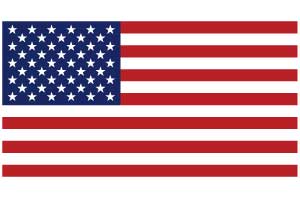
US Regulatory Status
Regulatory Agency
US Food & Drug Administration (FDA). Click here to access the site.
Regulatory Category(ies)
Conventional Food
Dietary Supplement
Prebiotic Types
Conventional Food
- Acacia, Arabinoxylan, Fructooligosaccharides (FOS), Galactooligosaccharides (GOS), Glucan, Inulin, Isomaltooligosaccharides (IMO), Pectin, Resistant Starch, Xylooligosaccharides (XOS)
Dietary Supplement
- Oligosaccharides
Fiber Definition
The Nutrition Facts Label final rule defines “dietary fiber,” as “non-digestible soluble and insoluble carbohydrates (with 3 or more monomeric units), and lignin that are intrinsic and intact in plants; isolated or synthetic non-digestible carbohydrates (with 3 or more monomeric units) determined by FDA to have physiological effects that are beneficial to human health.”
Position on "Prebiotic Claim"
Conventional Food
- No written rule regarding the use structure and function claims for conventional food products.
- There is only a conceptual framework for structure function claims.
- Structure/function claims for conventional foods focus on effects derived from nutritive value. FDA is likely to interpret the dividing line between structure/function claims and disease claims in a similar manner for conventional foods as for dietary supplements.
- FDA does not require conventional food manufacturers to notify FDA about their structure/function claims, and disclaimers are not required for claims on conventional foods.
Dietary Supplement
- A 30 day notification period exists for structure-function claims.
- Structure-function claims are voluntary and do not have to be approved by the FDA; however, claims must be substantiated by human clinical trials.
- The statement does not claim to diagnose, mitigate, treat, cure, or prevent a specific disease or class of diseases.
Rationale if not permitted (Include Reference / Regulation)
Not applicable
Facts Panel Declaration (per category)
Conventional Food
- Under an appropriate nutrient profile and based the ingredient such as fiber, sugar, etc.
Dietary Supplements
- The nutrition label for a dietary supplement is called a “Supplement Facts” panel.
- Total calories, calories from fat, total fat, saturated fat, cholesterol, sodium, total carbohydrate, dietary fiber, sugars, protein, vitamin A, vitamin C, calcium, and iron must be listed when they are present in measurable amounts
- Calories from saturated fat and the amount of polyunsaturated fat, monounsaturated fat, soluble fiber, insoluble fiber, sugar alcohol, and other carbohydrate may be declared, but they must be declared when a claim is made about them
Approved Health Claim(s)
No Qualified Health Claims (QHC) available
Dose Specifics
No information available
Regulatory Submission
Exclusive to prebiotic type/generic approval
Claims Substantiation
Conventional Food
- A substantial history of use if GRAS (Link)
- Guidance for Industry: Evidence-Based Review System for the Scientific Evaluation of Health Claims (Link)
Dietary Supplements
- Competent and reliable scientific substantiation: tests, analyses, research, studies, or other evidence based on the expertise of professionals in the relevant area, that has been conducted and evaluated in an objective manner by persons qualified to do so, using procedures generally accepted in the profession to yield accurate and reliable results (Link)
- Guidance for Industry: Evidence-Based Review System for the Scientific Evaluation of Health Claims (Link)
Regulatory Approval Process
QHC and Significant Scientific Agreement (SSA) process to characterize a relationship between a substance (a specific food component or specific food) and a disease or health-related condition
Unlike health claims, dietary guidance statements and structure/function claims are not subject to premarket review and authorization by FDA.
Post-Approval Process (i.e., Amendment and Renewal)
No information available
Enforcement Practice
- Federal Trade Commission (FTC)
- Food and Drug Administration (FDA)
- U.S. Department of Agriculture (USDA)
- All share jurisdiction over claims made by manufacturers of food products
Link to Reference Documents
No information available
If you have updated information for this page, please submit it to Regulatory Lead Tania John for review: tjohn@nutrasource.ca. Thank you.

